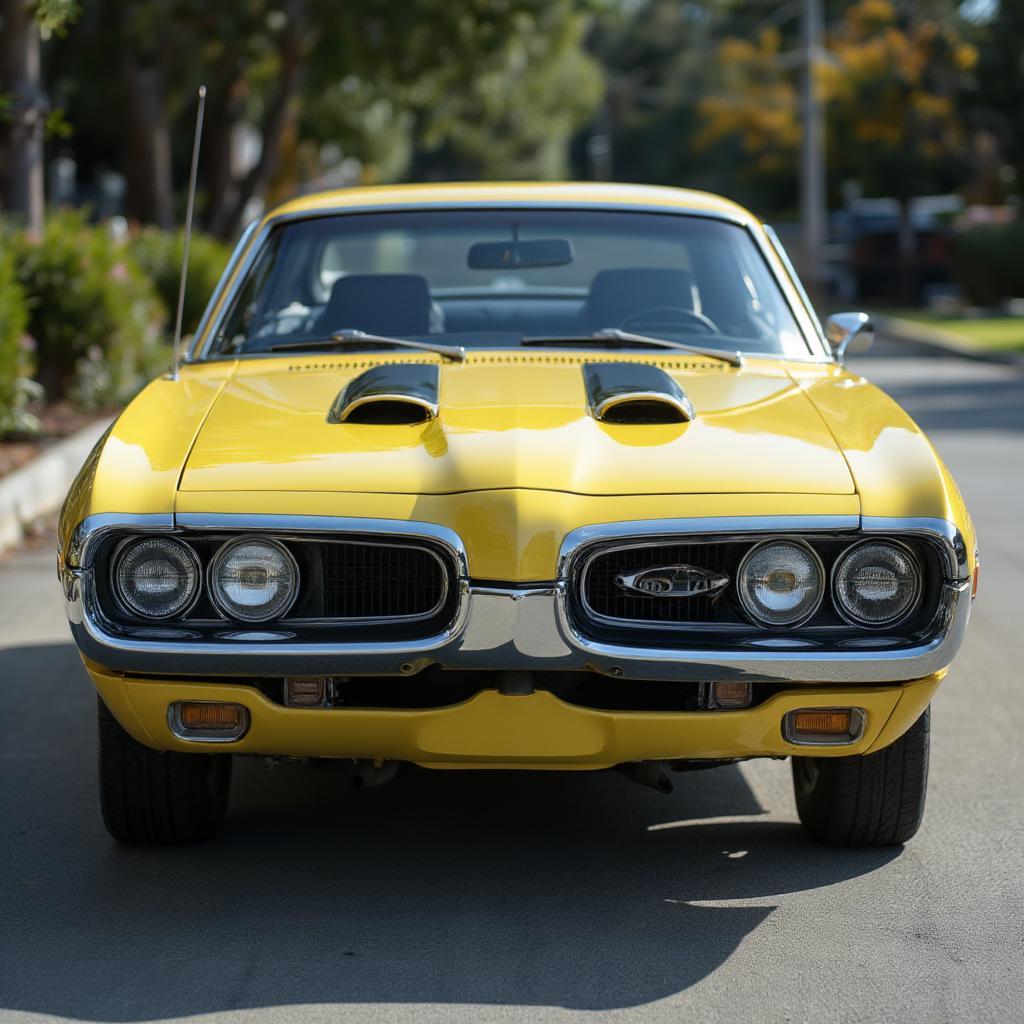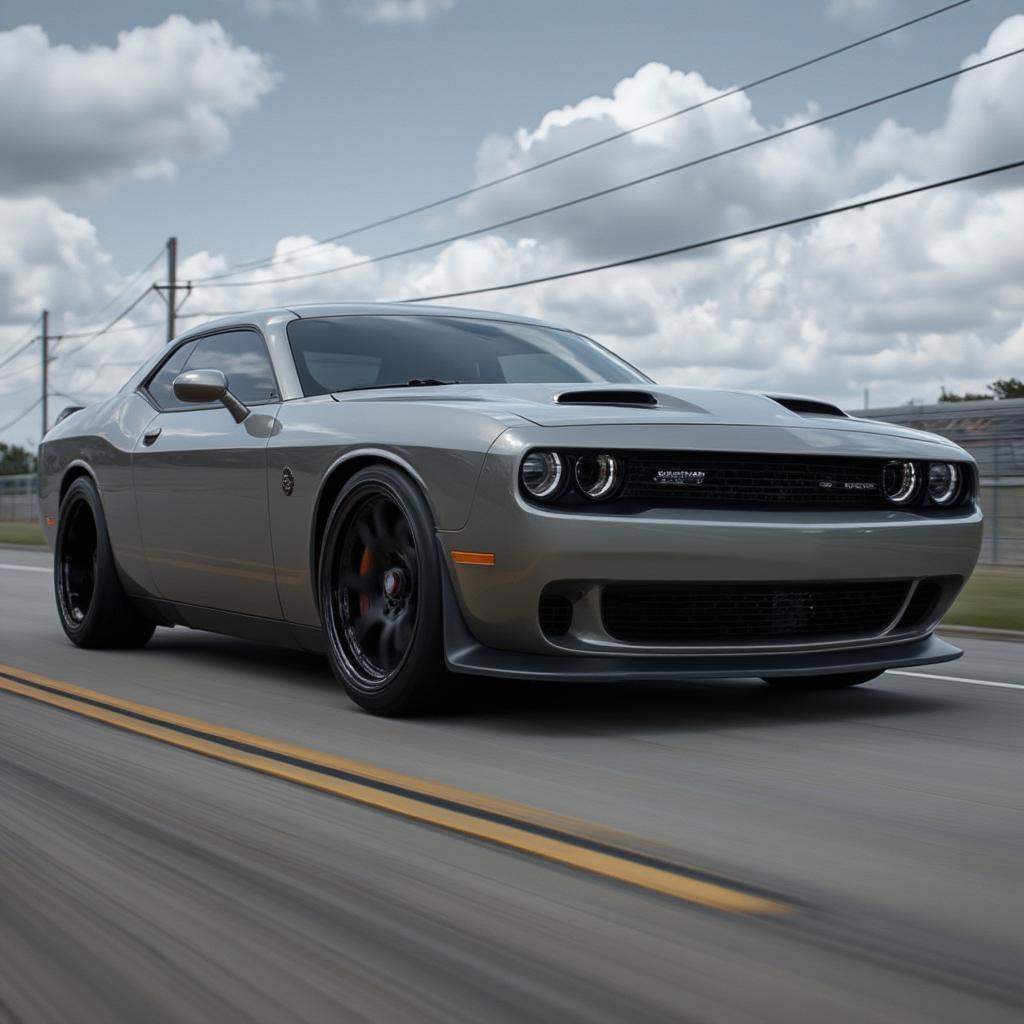1974 Dodge Super Bee: A Muscle Car’s Last Stand and Enduring Legacy

The 1974 Dodge Super Bee isn’t just another muscle car; it represents the final chapter of an era, a last hurrah before fuel economy regulations and changing tastes reshaped the automotive landscape. It’s a vehicle steeped in history, a testament to the raw power and bold styling that defined American muscle in its heyday. For enthusiasts, the ’74 Super Bee remains a fascinating study in design compromise, performance, and the bittersweet end of an iconic nameplate. Let’s delve deep into what makes this car so compelling, its place in automotive lore, and why it still commands such respect and adoration today.
The Super Bee’s Evolution: From Coronet to Charger
To truly understand the 1974 Super Bee, we need to look back at its origins. Initially introduced in 1968 as a more affordable version of the Dodge Coronet R/T, the Super Bee was Dodge’s answer to Plymouth’s popular Road Runner. It was all about raw performance and bold graphics. 
Throughout its production run, the Super Bee was available with a variety of engine options, from the base 383 cubic inch V8 to the high-performance 440 cubic inch V8. However, by 1971, the Super Bee had shifted from the Coronet platform to the Dodge Charger. This move marked a significant change in the car’s identity, aligning it with a more upscale image. The Charger’s sleek, fastback design offered a modern canvas for the Super Bee’s performance aspirations. The 1974 model year represents the swan song of the Super Bee moniker, a final evolution before it was retired indefinitely.
1974: A Year of Change and Transition
The automotive world was facing considerable challenges in 1974. The oil crisis of 1973 had sent fuel prices soaring, and new emissions regulations were beginning to bite. Muscle cars, known for their prodigious thirst for gasoline, suddenly appeared out of step with the times. This context is crucial for understanding the 1974 Super Bee. It wasn’t a development from the high-performance past. It was designed with an eye on the new realities of a changing market. The 1974 Super Bee, offered only as a Charger body style, showcased some key differences from prior Super Bees, with the design becoming larger and the performance somewhat tempered.
The 1974 Charger’s overall design was updated, showing a more rounded and less angular design compared to the earlier models. This included changes to the grille and taillights, giving the car a heavier look. The Super Bee package, while still distinctive, was not as overtly aggressive as previous iterations. Still, it held a particular attraction for enthusiasts who loved muscle cars. As noted by classic car historian, Mr. Arthur J. Davies, “The 1974 Super Bee represented a transitional period for muscle cars. It was an attempt to balance the performance heritage with the new demands of fuel efficiency and emissions regulations.”
The Heart of the Beast: Engine and Performance
The 1974 Dodge Super Bee offered two engine options: the standard 360 cubic inch V8 and the optional 400 cubic inch V8. While these engines were still potent, they were not the fire-breathing giants of the Super Bee’s early days. Performance was also toned down because of emissions regulations. However, the Super Bee still offered drivers an authentic muscle car experience.
- 360 Cubic Inch V8: This engine served as the standard powertrain for the 1974 Super Bee. Although not as powerful as the 440 cubic inch engines from the past, the 360 offered a solid performance for the time.
- 400 Cubic Inch V8: The optional engine delivered more torque and horsepower than the 360, catering to those wanting a little extra punch. However, due to the new regulations, the performance was not as sharp as before.
While the 1974 Super Bee might not be the fastest muscle car of all time, it’s essential to consider the context of its era. It was a powerful and respectable car in its own time, and it still offers a raw and engaging driving experience that many newer cars lack. It was definitely not a modern dodge challenger 440 but the raw power makes the driving experience engaging and true to its era.
Styling and Design Cues
The 1974 Super Bee featured distinctive styling cues that set it apart from other Chargers. While not as dramatic as earlier Super Bee’s, they made a statement:
- “Super Bee” Graphics: The famous Super Bee decals were still proudly displayed on the rear quarter panels.
- Stripes: Side stripes extended the full length of the car, adding to its sporty appearance.
- Hood: The “Ramcharger” hood with its prominent air intakes, was a feature that could be opted for adding to the car’s aggressive styling.
- Grille and Taillights: The 1974 Charger’s grille and taillights were redesigned, giving the car a modern look for the time, yet also making it distinct from its predecessors.

Why the 1974 Super Bee is Still Relevant Today?
Despite being the last Super Bee, the 1974 model holds a unique place in the hearts of muscle car enthusiasts. It marks the end of an era, a transition point where high-horsepower muscle cars began to fade away. However, the 1974 Dodge Super Bee is more than just a relic of the past; it’s a symbol of American automotive culture, a reminder of a time when cars were unapologetically bold and powerful.
Here’s why it remains a sought-after classic:
- Historical Significance: As the final Super Bee, it represents the end of a legendary nameplate and an era.
- Rarity: Fewer 1974 Super Bees were produced compared to earlier models, making them more exclusive and desirable to collectors.
- Unique Styling: Its specific design and styling features make it stand out from other muscle cars of the same era.
- Collectible Status: Rising prices in recent years show its desirability as a classic muscle car.
- Raw Driving Experience: Despite its toned-down performance compared to its predecessors, the car still provides an engaging and powerful driving experience.
“Collectors appreciate the 1974 Super Bee for its historical significance and its unique place within the muscle car spectrum,” explains classic car appraiser, Eleanor Vance. “It’s not the most powerful Super Bee ever made, but it’s arguably the most intriguing because of the era it represents. Also, it’s unique styling compared to its predecessors makes it a sought-after collector’s piece.” For many, owning a 1974 Super Bee is owning a piece of automotive history.
Restoration and Preservation
Due to its age and the rigors of daily use, many 1974 Super Bees have required restoration. Owners who undertake these projects often take great pride in bringing these cars back to their original glory. The restoration process involves careful attention to detail, from the correct paint color to the original decals and upholstery, as well as making sure the engine performs as originally intended. This dedication helps preserve these cars for future generations of enthusiasts, allowing them to experience these amazing relics of muscle car era. The pursuit of authenticity is a challenge that many restorers embrace with enthusiasm.
The Legacy of the 1974 Super Bee
The 1974 Dodge Super Bee, while representing a transitional era, left an indelible mark on automotive history. It’s a testament to the enduring appeal of American muscle cars and the legacy of the Super Bee name. While it may not be the most powerful muscle car of its generation, it stands as a reminder of a bygone era and the challenges the automotive industry faced during the 1970s. Whether you’re an avid collector, a casual enthusiast, or just someone with an appreciation for classic cars, the 1974 Dodge Super Bee is a vehicle worth celebrating. It stands as a symbol of resilience and the enduring love for raw power and bold design. It might just be the car that you should consider for an addition to your own garage. The legacy of this magnificent machine lives on through enthusiasts who love the raw American muscle era.
Conclusion
The 1974 Dodge Super Bee is much more than just a classic car; it’s a symbol of an era, a testament to American automotive ingenuity, and a bittersweet end to the Super Bee legacy. Its unique styling, while toned down from its predecessors, is distinctive, its performance respectable for its time and now a great engaging raw driving experience, and its place in automotive history secure. For those who appreciate the raw power and unadulterated design of the muscle car era, the 1974 Super Bee remains a highly desirable and endlessly fascinating vehicle. Owning one is about preserving a piece of the past and celebrating the legend of American muscle.
FAQ About the 1974 Dodge Super Bee
-
What engines were available for the 1974 Dodge Super Bee?
The 1974 Super Bee was offered with two engine choices: the standard 360 cubic inch V8 and the optional 400 cubic inch V8. These were smaller than the larger engines of the past, but still offered a decent amount of power for the time. -
Why is the 1974 Super Bee considered unique among muscle cars?
The 1974 Super Bee is unique because it represents the last year of the Super Bee nameplate and reflects the changes the automotive industry was undergoing due to the oil crisis and emissions regulations. It’s a transitional car, showing a shift in design and performance. -
How does the 1974 Super Bee compare to earlier Super Bee models?
Earlier Super Bee models were generally more powerful with larger engine options and had more aggressive styling. The 1974 model was less powerful due to new regulations and had a more rounded, less angular design. dodge challenger 440 had much larger engines at this time. -
What are some key design features of the 1974 Super Bee?
Key design features include the Super Bee decals on the rear quarter panels, full-length side stripes, the optional “Ramcharger” hood with air intakes, and the unique 1974 Charger grille and taillight design. -
Is the 1974 Dodge Super Bee a rare car?
Yes, the 1974 Super Bee is considered rare due to its low production numbers and the fact that it was the final year of the model, making it highly sought after by collectors. -
What makes the 1974 Super Bee a good car to restore?
Its rarity, historical significance, unique styling, and its place in muscle car history all make it a great car to restore. For many, the challenge of restoring it is what brings the most enjoyment. -
What is the current value of a 1974 Dodge Super Bee?
The value of a 1974 Super Bee varies depending on its condition, originality, and options. However, in recent years, prices have been steadily increasing as demand from collectors grows. It’s best to check with classic car valuation resources for the most up-to-date information. -
Where can I find parts to restore a 1974 Super Bee?
Parts for the 1974 Super Bee can be found through various classic car parts suppliers, online marketplaces, and specialized muscle car parts vendors. However, finding original parts for the Super Bee, can sometimes be a challenge. -
What was the “Ramcharger” Hood option on the 1974 Super Bee?
The “Ramcharger” hood was an optional feature that included prominent air intakes on the hood, adding to the car’s aggressive appearance and performance.




